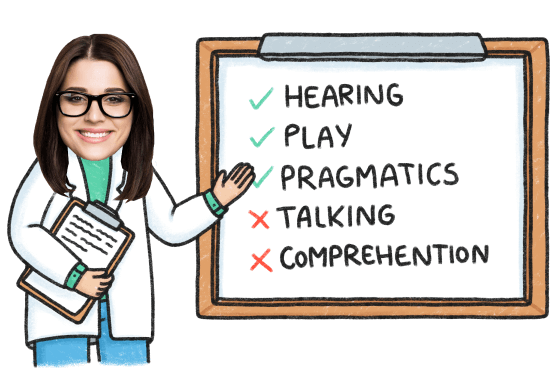All about Stimming in Kids with Autism
Jan 15, 2022 The word “stimming” refers to any behavior that is done as a way to self-soothe or stimulate an individual. It can be a vocal sound or movement that is repeated over and over. Read why it happens, how to recognize it, and how to manage it!
Stimming is one diagnostic criterion for a child undergoing testing to see if they have Autism Spectrum Disorder (ASD).
Stimming isn’t necessarily a bad thing or something that needs to be stifled, but it should be addressed if the behavior is disruptive or interferes with quality of life.
I grew up with a young man diagnosed with Tourette’s. He was mainstreamed with us all the way through high school. His behaviors were not noticeable until he became upset or worried. The behaviors would include smacking his head and verbally yelling out loud. The things he would say included curse words or vulgar comments, which was distracting to all of the other students attempting to learn. He was assigned a one-to-one aide who did her best to decrease the stimming behavior in order to decrease the distraction and disruption to the classroom.
Autism and Speech Blubs
Speech Blubs is a speech therapy app with more than 1,500 activities, face filters, voice-activated activities, and educational bonus videos.
We initially developed Speech Blubs for children with autism, Down syndrome, and apraxia of speech! The app uses video modeling, which is a proven method for engaging kids on the spectrum.
Our “Emotions” section, for example, was created for children with autism in mind. We know they have a hard time recognizing and expressing emotions. In this section, they learn about emotions while practicing speech.
Boost Your Child’s Speech Development!
Improve language & communication skills with fun learning!

What Does Stimming Look Like in an Autistic Child?
Common stimming behaviors include:
- biting their fingernails
- twirling their hair around their fingers
- cracking their knuckles or other joints
- drumming their fingers
- tapping their pencil
- jiggling their foot
- whistling
In a person with autism, stimming might involve:
- rocking
- flapping hands or flicking or snapping fingers
- bouncing, jumping, or twirling
- pacing or walking on tiptoes
- pulling hair
- repeating words or phrases
- rubbing the skin or scratching
- repetitive blinking
- staring at lights or rotating objects such as ceiling fans
- licking, rubbing, or stroking particular types of objects
- sniffing at people or objects
- rearranging objects
A child with autism may spend hours on end arranging toys instead of playing with them. Also, repetitive movements or behavior may involve obsessions or preoccupations with certain objects or the reciting of intricate details of a particular subject matter. Even more, there are other stimming behaviors that can cause physical harm. These might include:
- head banging
- punching or biting
- excessive rubbing or scratching at the skin
- picking at scabs or sores
- swallowing dangerous items
Why Does Stimming Happen?
It’s not always easy to determine why stimming behaviors occur, but usually, it’s a coping mechanism that people use to deal with a feeling or emotion. One example is when you crack your knuckles when you are nervous or may spin a key chain around when you’re stressed. A person diagnosed with Autism may stim to:
- stimulate the senses or decrease sensory overload
- adapt to an unfamiliar environment
- reduce anxiety and calm themselves
- express frustration, especially if they have trouble communicating effectively
- avoid certain activities or expectations
A behavior therapist or someone who specializes in autism can help you to decode your child’s stimming behavior and give you alternative activities for them to do that are not as repetitive or distracting. Remember – stimming doesn’t need to be controlled unless it:
- Causes social isolation?
- Is it disruptive at school?
- Affects the ability to learn?
- Causes problems for other family members?
- Destructive or dangerous?
When children are hypersensitive, or overly sensitive to stimuli they possibly may stim because they want to reduce stimulation because they perceive their environments and surroundings to be too loud, bright, or too much to handle. When children are hyposensitive, or under-responsive to stimuli, they have the opposite effects and stimming may actually increase arousal. You may notice they are engaging in self-stimulatory behaviors that provide them with sensory excitement. You may notice repetitive behaviors like flapping their arms, spinning, licking, and sucking on toys.


